A PRIMER FOR BEGINNING
PSYCHOTHERAPY
Second Edition
A PRIMER
FOR BEGINNING
PSYCHOTHERAPY
Second Edition
William N. Goldstein, M.D.
Baltimore-Washington Institute for Psychoanalysis
Georgetown University Medical Center

Published by
Brunner-Routledge
29 West 35th Street
New York, NY 10001
Published in Great Britain
Brunner-Routledge
11 New Fetter Lane
London EC4P 4EE
Brunner-Routledge is an imprint of the Taylor & Francis Group
Brunner-Routledge
A PRIMER FOR BEGINNING PSYCHOTHERAPY, SECOND EDITION
Copyright 2001 Taylor & Francis. All rights reserved. Printed in the United
States of America. Except as permitted under the United States Copyright Act
of 1976, no part of this publication may be reproduced or distributed in any
form or by any means, or stored in a database or retrieval system, without
prior written permission of the publisher.
4567890
Printed by George H. Buchanan, Philadelphia, PA, 2001.
A CIP catalog record for this book is available from the British Library.
 The paper in this publication meets the requirements of the ANSI
The paper in this publication meets the requirements of the ANSI
Standard Z39.48-1984 (Permanence of Paper).
Library of Congress Cataloging-in-Publication Data
Goldstein, William N.
A primer for beginning psychotherapy / William N. Goldstein.2nd ed.
p. cm.
Includes bibliographical references and index.
ISBN 1-58391-074-3 (alk. paper)
1. Psychotherapy.I. Title.
| RC480.5 G615 2001 |
| 616.8914dc21 | 00-046675 |
ISBN: 1-58391-074-3 (paper)
CONTENTS
|
41.What Are the Goals of the Initial Session? |
|
|
A-5.How Does One Think about Impulse Control and Frustration Tolerance? |
PREFACE
The second edition of the primer provides several useful additions. First and foremost of these is a chapter on contemporary schools of thought. Although once preeminent amongst psychotherapies with psychodynamic orientations, ego psychology is now only one of several highly influential schools of thought. Other competing models include self psychology, intersubjectivity, object relations theory, social constructionism, and the relational school. The chapter on contemporary schools offers succinct summaries of these varying models, comparing and contrasting each. The primer focuses mainly on clinical and practical matters. Thus, although it emphasizes an ego psychological approach, it can be equally useful to therapists using these other competing models.
The second edition also presents a number of new practical topics. These include discussions regarding the frequency of sessions, the spacing of sessions, answering questions, accepting gifts, self disclosures, and enactments. Finally, an appendix on ego functions has been added. Designed especially for therapists unfamiliar with this way of thinking, the appendix should be particularly useful with regard to classifying patients into one of the four large diagnostic groupings.
PREFACE
TO THE FIRST EDITION
Designed especially for students and mental health professionals at the early stages of their careers, this primer provides a practical guide for doing psychotherapy. Short and concise, it addresses virtually all questions that a neophyte therapist might have. A major goal is to present the basics in a clear and succinct way, with special emphasis on techniques and clinical example.
The primer begins by looking at the patients: who they are and why they come for psychotherapy. A classification dividing all patients into one of four large groupingsnormal-neurotic, narcissistic, borderline, and psychoticis elaborated. This classification is especially useful, each large grouping being associated with its own therapeutic strategies, approaches, and techniques. Throughout the book, there is comparison and contrast regarding each of the four groupings.
The primer next addresses the therapists: who they are, what attracts them to the field, and inherent problems with which they will have to deal. The personal characteristics, experiences, and training deemed most useful for these individuals are addressed, in addition to the issues of sex, ethnic group, and specialization.
An overview of psychotherapy is then presented. The different types of psychotherapy are conceptualized on a continuum with the most insight- oriented and exploratory types at one end and the most supportive types at the other. Five types of psychotherapy along this continuum are described: psychoanalysis, analytically oriented psychotherapy, modified analytically oriented psychotherapy, dynamically oriented psychotherapy, and supportive psychotherapy. Cognitive therapy is also discussed. Emphasis is on what kinds of patients do best with each of the different therapies.
The next four chapters address questions related to getting started. A chapter on the larger issues regarding psychotherapy focuses on the stability of the therapeutic environment, the neutrality and flexibility of the therapist, countertransference, empathy, the activity of the therapist, and the mechanism of change in psychotherapy. A chapter on arrangements discusses scheduling, payments, missed appointments, guidelines for the patient, contracts, and smoking and food in the sessions. A separate chapter provides instruction about how to arrange the office, while one on the initial interview highlights interactions between patient and therapist at this beginning stage of treatment.
The remainder of the book focuses on the nitty-gritty of psychotherapy. Here techniques and interventions are spelled out in detail, amply illustrated by clinical vignettes. Chapters on transference and the therapeutic alliance and on the basic strategy provide necessary theoretical background. A chapter on therapeutic interventions describes the various types of interventions, the selection of interventions, and the manner and style of interventions. This chapter also discusses affirmative interpretations, preparatory comments, feedback from the patient, lateness, missed appointments, and the 5-minute warning.
A chapter on interventions regarding anxiety and defense details techniques using this conceptual framework, providing applications to all four large groupings. A chapter on special issues and problems addresses primitive defenses, projective identification, severe acting out, the suicidal patient, difficulties with reality testing, dreams, and medication. The primer ends with a chapter discussing phases, trends, and termination.
CHAPTER
The Patients
1.Who Are the Patients?
Patients include anybody and everybody. They come from all walks of life, all socioeconomic states, and all ethnic groups. They present with unending variation in regard to character traits, personalities, and behavior. What they have in common is that they suffer from problems that interfere with their attaining their life goals, maximizing their potentials, and leading basically contented lives. Their problems stem from conflicts that are at least partially outside of their awarenesses. These problems vary in intensity and present either as symptoms or as personality traits and patterns. Often the problems are overtly bothersome to the patients. At other times, although they do not cause discomfort, they interfere with the patients lives in ways that have become apparent to them.

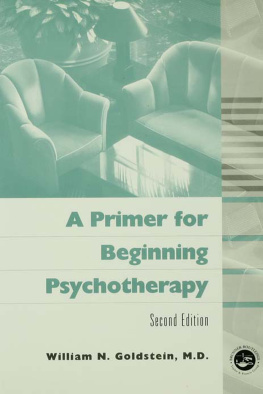







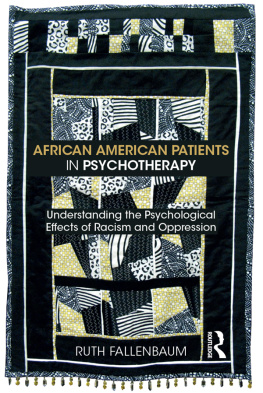
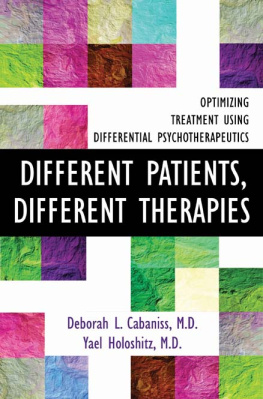

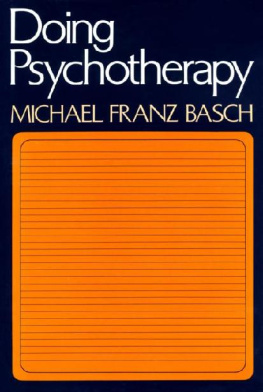
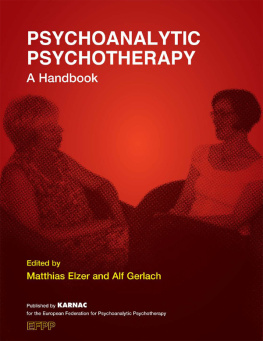
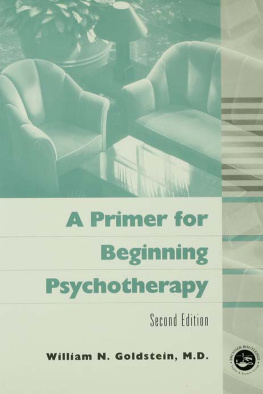





 The paper in this publication meets the requirements of the ANSI
The paper in this publication meets the requirements of the ANSI